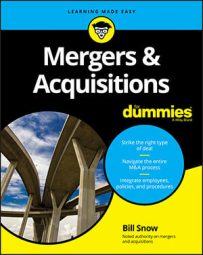EBITDA is a key M&A metric. Heck, it’s a key metric in all things business. EBITDA is a measure of a company’s profitability for doing what that company is supposed to do: selling a product or service.
EBITDA effectively removes the profit-distorting effects of taxes, interest income, and expense and eliminates the effects of making capital investments in the firm. In other words, EBITDA is a measure of a company’s financial performance if that company were in a bubble, sheltered from the real world.
Because EBITDA helps measure the company’s underlying profit, banks and other sources of capital tend to use EBITDA when determining how much money they can lend. These institutions measure that amount in turns; one turn is equal to the business’s EBITDA.
For example, if the business is generating $3 million in EBITDA, one turn of EBITDA is $3 million. If a company is being sold for $15 million, the Buyer needs to come up with five turns of EBITDA.
Buyer doesn’t necessarily come up with all the necessary turns from one lender. A senior lender may be willing to extend, say, two turns of EBITDA to Buyer ($6 million in this example). If Buyer gets a subordinate debt of one turn ($3 million) and chips in three turns itself, the acquisition financing is complete. Most acquisitions follow a financing model along these lines.
In years past, a Buyer may have been able to make that acquisition using less of its own money, but with the tightening of the credit markets in 2008 and the downturn in the economy from 2001 to 2010, most Buyers now find they need to put in more equity than in years past.

